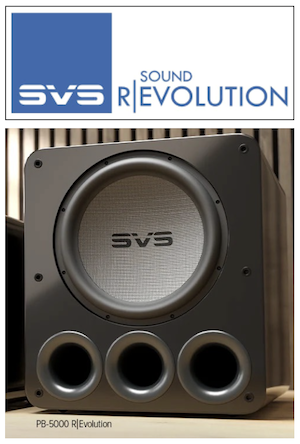(July 27, 2025) The 2025 edition of Value Electronics’ annual TV Shootout has wrapped, once again turning Robert and Wendy Zohn’s high-end showroom in Scarsdale, New York, into a blacked-out evaluation lab for the world’s best flatpanel TVs. For the first time – and perhaps the last – every competing display was OLED, underscoring the dominance and ongoing evolution of self-emissive display technology.
Gone were MiniLED LCD contenders. Gone, too, was a second-day focus on ultra-large screens. In their place: a laser-focused showdown featuring 65-inch flagship OLEDs from LG, Sony, Samsung, and, for the first time in years, Panasonic.
Each model was calibrated to reference standards by industry veteran Dwayne Davis, then positioned alongside a Sony BVM-HX3110 mastering monitor (the same model trusted by Hollywood colorists and post-production teams). Testing spanned professional benchmarks and real-world movie and TV content. Judges were asked to compare each model’s performance directly against the studio reference, not against each other, across key picture quality categories: contrast, color fidelity, motion resolution, and overall SDR and HDR performance.
Before diving into the results, it’s worth noting how much has changed over the past twelve months. In 2024, Sony’s XR65A95L and Bravia 9 models claimed wins for OLED and MiniLED, thanks in part to elite onboard processing. Samsung, although competitive, landed in second for both categories, while LG’s MLA-based G4 OLED trailed behind in HDR performance despite strong SDR results. My personal scoring closely aligned with the judges’ averages, with Sony earning top marks and LG impressing in key scenarios. Samsung’s aggressive anti-reflective coating, however, was a dealbreaker for me, particularly under real-world lighting conditions. More on that below...
Flash forward to 2025, and the competition looks both familiar and dramatically different. OLED remains dominant, but the technology is branching in compelling new directions. Sony and Samsung are now using 4th-generation Samsung Display QD-OLED panels, while LG and Panasonic are showcasing the latest iteration of WOLED with LG Display’s new Primary RGB Tandem Panel. This four-stack design promises increased light output and enhanced color volume compared to previous iterations, aiming to narrow the performance gap with a Quantum Dot approach.
All four TVs land in the same general pricing tier, ranging from approximately $2,999 to $3,399 MSRP for their 65-inch variants. Each supports HDMI 2.1 and the expected suite of gaming and video features – VRR, ALLM, eARC, etc. – though Samsung still omits support for Dolby Vision and DTS, which could be dealbreakers for some cinephiles. Sony sticks with its Acoustic Surface Audio+ technology, using the panel itself to generate sound. Panasonic’s design includes a thicker chassis to accommodate both an advanced cooling system and a powerful speaker array. Samsung, meanwhile, has refined its anti-reflective matte coating, and LG introduces its upgraded Alpha 11 Gen 2 processor with expanded AI-driven picture processing.
This year’s contenders:
- Sony K65XR80M2 BRAVIA 8 II OLED TV
- Samsung QN65S95F OLED TV
- LG OLED65G5WUA OLED TV
- Panasonic TV65Z95BP OLED TV
Evaluation Criteria
This year's TVs represent the pinnacle of home display technology, and when viewed under typical conditions, each looks exceptional. However, the Shootout is designed to push performance to the limit, exposing weaknesses that most casual viewers might not notice. That’s why the judging panel and its trained eyes are crucial for scoring across multiple performance categories.
For all testing sections but one, the TVs were evaluated in calibrated states, examining Standard Dynamic Range (SDR) and High Dynamic Range (HDR) performance across three primary categories: Contrast and Grayscale, Color, and Processing.
For Contrast and Grayscale, shadow detail and grayscale linearity were scrutinized. Shadow detail refers to a TV's ability to accurately render subtle differences in dark scenes, revealing textures and objects without blocking or crushing blacks. Grayscale linearity, on the other hand, assesses how smoothly a display transitions from black to white, looking for any clipping, compression, or coloration. In HDR evaluations, this category expanded to include HDR tone mapping and luminance, where judges examined how well a TV preserved highlight detail and handled overall dynamic range without introducing anomalies, such as clipping.
Color assessments were divided into evaluations of saturation in low-luminance content and overall color accuracy. For SDR, this included how faithfully the TV reproduced skin tones and other real-world hues, particularly under typical lighting conditions. In HDR mode, judges also focused on wide color gamut performance, evaluating the vibrancy and accuracy of bright colors within the BT.2020 color space. An important component here was how well the display maintained color integrity in both shadowed and high-brightness scenes, avoiding desaturation or unnatural color shifts.
Processing encompassed both image clarity and motion handling. In SDR, judges looked at clarity and grain preservation. This included the TV’s ability to retain fine detail, textures, and film grain without introducing sharpening artifacts or noise reduction side effects. In HDR mode, the focus shifted to posterization and quantization, which evaluated how smoothly gradients were rendered and whether any color banding or pulsing luminance effects were present. Motion handling was a common consideration in both SDR and HDR evaluations, where judges assessed the smoothness of 24p and 60p content, looking for judder, skipped frames, or excessive interpolation.
One last category, called “General Consumer,” found TVs taken out of their calibrated states and placed in their best out-of-the-box picture modes. They were then viewed playing SDR and HDR content, and judges were asked to evaluate overall picture quality, along with factors like off-axis viewing and screen reflectivity.
The Results
The following two images show averaged final scores from the judging pool.
Scoring found Sony’s K65XR80M2 to be the best overall TV for Standard Dynamic Range viewing. In other words, if you primarily watch cable TV, Blu-rays, and streaming content, this might be the best pick for you. High Dynamic Range scoring produced a different champ, finding Panasonic’s TV65Z95BP barely edging out Samsung’s QN65S95F. So, if you primarily watch 4K material laced with HDR – movie fans, I’m looking at you – then either one of these TVs should be high on your list.
When both SDR and HDR scores were combined, Sony’s K65XR90M2 was crowned as the “2025 King of TV” with an overall score of 8.04. Samsung came in second with a score of 7.97, Panasonic landed in third with a 7.9, and LG placed a distant last at 6.98
My Take
Judges evaluate skin tones during the SDR portion of the evaluation.
So, with final scoring in hand, what does a buyer do with this information? My suggestion is: look at the scoring and apply categories that match your viewing situation to your overall buying strategy.
In almost every case, with the exception of black and white content, you could walk into a room, see one of the competing models showing real-world content, and be blown away.
They really are that good.
LG Needs to Up Its Game
LG’s OLED65G5WUA came in dead last and for good reason. It failed - and failed miserably - at several key tasks, with the worst being Grey Scale, Shadow Detail, and Posterization. Most troubling was Grey Scale accuracy, where visible color shifts were introduced. This degraded real-world content like Mad Max: Fury Road – Black and Chrome, which had a clear green push. Shadow detail was also poor, with fine gradations smeared or blocked compared to the BVM studio monitor. Posterization was equally noticeable, with obvious color banding during test patterns and some content.
LG’s performance across all three categories was far behind the competition. In fact, I heard one judge remark, “Did this TV fall off the back of a truck?”
Unfortunately, I can’t recommend LG’s OLED65G5WUA unless it can be had at a notable price cut.
Sony Might Be the Best Choice for Most Buyers
Sony’s edge in SDR processing was significant enough to push the K65XR80M2 into the overall SDR/HDR winning slot. That may not thrill HDR purists, but most consumers primarily watch SDR content from streaming and cable sources. If that’s you, Sony is the best all-around pick.
Samsung Has a Good Thing Cook'n
Year after year, Samsung closes in on the crown. This year’s QN65S95F is its strongest effort yet – yup, this is a fantastic TV.
The TV’s use of Samsung Display’s QD OLED panel is masterful. It looked brighter than Sony's model, outpacing Sony in both High and Low Luminance Color Saturation, and was notably better in the HDR Color category than LG and Panasonic.
My one performance complaint? A slight red push in skin tones as compared to the reference monitor. That's a tough one to overlook, though you'd likely be none the wiser if you didn't have a reference baseline to compare it to.
Panasonic Performed Amazingly Well
The TV65Z95BP is a powerhouse for 4K HDR content. In my scoring, it beat Samsung in HDR Dynamic Range and Processing, which, by the way, mirrored the rest of the judges’ scoring. If you’re a movie-first viewer and want to avoid Samsung’s matte screen, Panasonic should be at the top of your list. I only wish it used a QD-OLED panel (that could take this model from greatness to greater-ness).
One caveat: its size. The TV is 2.04” deep and nearly 35” tall without the stand. That’s significantly larger than Samsung’s 32.7” H x 0.4” D profile or Sony’s 32.75” H x 1.37” D design. Aesthetically speaking, that extra depth might be a turn-off to some, particularly if you want a low-profile look on a wall.
Good or Bad, Samsung's Anti-Reflective Screen is a Factor
Some judges loved it – I didn’t. Yes, Samsung’s matte coating is excellent at diffusing reflections. In rooms with windows or angled lighting, it smudges reflections into oblivion. Also, I couldn’t see any of the rainbow reflections that last year’s model suffered from at off-axis viewing angles.
Those are upsides.
The downside? It elevates black levels. It’s simply how the coating works – it disperses light but also lifts the screen’s baseline blackness, but also the blackness of blacks as they’re displayed, when reflections are involved. I’d be concerned about this in rooms with bright direct overhead lighting or nearby lamps. The keyword here is "I," because some people feel it's a tradeoff worth making. In other words, you should evaluate your viewing conditions, the intensity of light sources, and experience the anti-reflective coating in person. Then make your decision.
Additionally, during the dark scene content testing, judges noted a visible bloom around a brightly lit black and white face surrounded by blackness. This artifact was specific to the QN65S95F, leading to some speculation that the matte coating was to blame. Yes, this occurrence was isolated to content that hardly represents typical viewing scenarios, but it definitely was ‘a thing’ that was hard to unsee.
Unfortunately, there isn’t a version of the QN65S95F without the coating. Samsung, if you're listening, make it happen!
What’s Next?
Sony accepts the award for "2025 King of TVs" at this year's event.
This is a great year to buy a premium OLED TV in North America. Are you a streaming-focused viewer? Sony’s got you covered. Need strong performance in bright rooms? Samsung’s matte screen can help. Want uncompromising HDR image quality? Panasonic is your pick.
Of course, there are plenty of scenarios that could flip those recommendations, but you get the idea. We’re spoiled, and spoiled rotten.
Looking ahead, OLED may face serious pressure from RGB LED tech. Sony is reportedly working on a version that’s revolutionary and game-changing. So stay tuned, because next year's shootout might find OLED in the fight of its life!
Related Reading:
- 2025 TV Shootout Returns to Value Electronics with an All-OLED Lineup and Next-Gen Panels
- LG Opens Pre-Orders for 2025 QNED evo Lineup, Including Its First True Wireless QNED TV
- New BRAVIA 8 II QD-OLED Headlines Sony’s 2025 TV and Theater Audio Accessory Lineup
- PODCAST: News Galore on the Latest HTNR: A Panasonic TV Shake Up? Premium Audio Company Hits a Speed Bump, FIAE, and More!!
- PODCAST: On the Latest HTNR, We Kick Off Season Three by Catching Up On the Latest News, Including CES TV Tech Breakdowns!
Note: AV NIRVANA may make a small commission from affiliate links at no additional charge to you.
Last edited:









